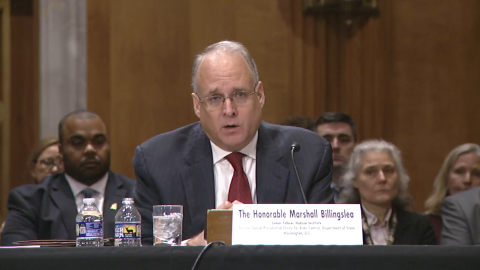If you had chest pains, you wouldnt go to a jury of your peers for a diagnosis. You wouldnt ask the teller at your bank whether you need angioplasty, or your car dealer whether you should have a general anesthesia, or your plumber how long to stay in the hospital. Youd go to medical specialists for that kind of advice.
For the same reason, juries drawn from the general population, as wonderful as they are in most cases, lack the expertise to determine whether your doctor diagnosed and treated you properly. No wonder the current system is failing to provide justice in medical malpractice cases. Jurors are expected to listen to weeks of conflicting testimony from hired guns, comprehend a barrage of unfamiliar medical terminology, and arrive at the truth. They often fail.
As many as 80 percent of the verdicts against defendants in these cases are unjustified by scientific evidence, according to the Harvard Medical Practice Study of malpractice suits in New York State. This analysis, completed in 2002, drew on 67,000 court records and patient records from fifty-three hospitals across New York State. A 1992 study done in Utah and Colorado reached nearly the identical result. Its a system gone awry. Its unfair to physicians, conflicts with our societys commitment to justice, and cheats actual victims of negligence who might receive more help faster in a fairer system.
What would make the system more reliable? Medical courts. There are already specialized courts of many kinds, including traffic court, patent court, family court, tax court, and more. Whats needed now are state medical courts, which would produce more predictable, less capricious verdicts and awards. The right to a jury trial, which is guaranteed in states constitutions, would be preserved. But the presiding judges in these courts would receive additional training in science and statistics, be duty-bound to keep speculative or irrelevant scientific testimony out of the courtroom, and would routinely call upon neutral experts to provide the jury with an unbiased account of the scientific matters at hand. These experts, chosen by the court, would help the jury understand which of the hired guns brought in by the parties in the suit is most probably telling the truth.
Sound radical? It is, compared with the usual reform proposedcaps on pain and suffering, meaning limits on what juries can award patients beyond their actual medical costs and lost wages. Year after year, battles are waged in Congress and many state legislatures over proposals to cap pain and suffering. Caps, however, merely limit the size of the award. They do not get to the heart of the problem: an unjustified verdict.
Why merely cap the injustice when you can eliminate it? Imagine any other area of the law in which 80 percent of verdicts were unjustified. If that were true in criminal law, no one would suggest that the remedy is caps on jail time. The decision-making process has to be changed to produce more predictable and scientifically justifiable verdicts.
Tragic Verdict
Every year in the United States, thousands of heart-wrenching stories prove the need for a better system of medical justice. Consider what happened to Jamie Frank and the doctors who helped bring her into the world. Its hard to believe that a trial could result in such an unfair verdict.
A joyous Jim and Amy Frank brought their three-day-old baby daughter, Jamie, home from New Yorks Lenox Hill Hospital on a January day in 1998. Jamies proud parents said the doctors had told them the six-pound, six-ounce girl was the picture of health.
When she was a week old, two weeks old, and four weeks old, Jamie was taken for routine check-ups by their family pediatrician. At her four-week check-up, she was given a hepatitis vaccination. Thats important to know, because vaccinations are given only when a baby is doing fine. The next day, her parents say, she wasnt feeding well, and the following day, at six oclock the next morning, the Franks were horrified to find their baby almost lifeless. They rushed her into the car and made their way through the early morning traffic to a nearby hospital.
Over the next few days, the news got more ghastly. Jamies listless body had been ravaged by a potentially deadly germ. The Group B streptococcus bacteria (GBS) had invaded her brain, causing meningitis and destroying as much as 75 percent of her mental functions. Jamie could see, but her brain would no longer process the images. She would never walk. She would never talk. Something as elementary as controlling her bowels or sitting up would be impossible. She would never progress beyond the mental state of a helpless infant. Jamies symptoms were a textbook case of late-onset GBS, a disease no one knows how to prevent. For that very reason, when a baby contracts late-onset GBS, it is not the doctors fault, and it is virtually impossible that there are grounds for a malpractice suit.
Nevertheless, the Franks won a multimillion-dollar verdict. A jury of six people drawn from the general population would listen to a flood of statistics, and medical terminology, and the conflicting claims of expert witnesses hired by the plaintiffs and defendants.
Ultimately, the jurorsconfused, intimidated, wearied by the task, and understandably sympathetic to the bereaved parentswould accept arguments put forward by the Franks attorney and rule that Jamie was the victim of a different disease, not late-onset GBS but early-onset GBS, a disease with the potential for a multimillion-dollar malpractice verdict.
The Trial
On May 30, 2003, Judge Alice Schlesinger swore in the jury in the case of Jamie Frank v. Lenox Hill Hospital and two physicians on staff there, the obstetrician who delivered Jamie and the pediatrician who examined her after she was born. Schlesinger told the jurors, you must decide which of the witnesses you believe . . . and which conflicting stories you will accept.
Conflicting stories was an understatement. Denise Dunleavy rose from the plaintiffs table, where she was seated with her clients, Jim and Amy Frank. Dunleavy came out swinging, claiming that the hospital and doctors were to blame. She spun a story that Jamie was infected at birth with early-onset GBS, and that the hospitals and doctors there had failed to follow well known procedures that might have saved the baby from brain damage.
How plausible was that? Totally implausible, the defense explained. Scientists have studied 250,000 babies exposed to this horrible germ during the birth process, and not one study found whats being proposed in this courtroom, that a Group B strep germ could linger in an infants bloodstream for thirty days before erupting into clearly recognizable and life-threatening symptoms. The research shows that 98.7 percent of babies with early-onset GBS have terrible symptoms within forty-eight hours of birth. Babies with early early-onset GBS get sick right away, not a month after birth, the way that Jamie did. The baby was healthy went she went home from Lenox Hill. She contracted late-onset GBS sometime close to her one month birthday. No one at Lenox Hill could have prevented it.
Could the jury be convinced that Jamie had early-onset GBS? That would depend largely on the expert witnesses called by each side. Im not a doctor, one juror said, and in the end, it was a who are you going to believe kind of thing. No wonder the trial veered from science to science fiction.
The plaintiffs wanted jurors to believe Michael Miller, a physician from Chicago. Though he had never treated Jamie or any other baby with GBS, he stated emphatically that Jamie had become infected with early-onset GBS at birth. The defense asked the judge to hold a special hearing without the jury present to determine whether Millers testimony was scientifically plausible. Judge Schlesinger declined, in effect declining to be the gatekeeper over what scientific theories were presented to the jury. It was the turning point in the trial.
After six weeks of complex testimony, with dozens of medical terms, how were the jurors supposed to decide which story was true? One juror explained that what finally made her believe Miller was that he came from Chicago. Chicago? She explained. There must have been a reason, she said, why the plaintiffs couldnt get a New York doctor to testify against the Lenox Hill staff. I thought maybe it was that theres some kind of brotherhood or code of silence that kept New York doctors from testifying against one another.
When it was time for closing arguments, the plaintiffs lawyers urged the jury not to get hung up on scientific evidence and medical distinctions. What is this about two diseases, late onset and early, like they are separate diseases? Dunleavy said. Its the same brain damage. With that statement, she dismissed the entire factual question the jury was supposed to decide. In response the defense attorneys went, step by step, through every piece of scientific evidence that proved Jamie had late onset GBS, a disease no one knows how to prevent. Yet the jury ruled that Jamie had early onset disease and awarded the Franks nearly $36 million.
The tragedy of Jamie Franks terrible disabilities was now compounded by the unfairness to the doctors and staff at Lenox Hill. The trial shows how the system can often go wrong.
Point One: One of the most common ploys of plaintiffs lawyers is to suggest that if the patient doesnt recover, someone must be at fault. Medicine can fix any problem, unless the doctors are not doing their job.
The Franks attorney told told the jury, you dont see this kind of devastating brain damage in this day and age, unless a baby is not treated properly. Unfortunately, such brain damage does occur. There are diseases that can ravage a babys brain, and that no one knows how to prevent or predict. Even the best doctors with all the latest tools cant diagnose some tragic conditions before they happen. Late-onset Group B strep is one of them. Every single year, 0.4 percent of babies get it.
Cerebral palsy is another such syndrome. Thirty percent of all lawsuits against obstetricians are for cerebral palsy, usually claiming the infant was deprived of oxygen at birth due to error by the physician or the hospital staff. Findings endorsed by the March of Dimes and the Centers for Disease Control and Prevention show that cerebral palsy is usually caused before birth by genetic defects or maternal infection, not by oxygen deprivation or other obstetrical factors. Yet many parents whose children develop cerebral palsy sue the doctor and win.
Families facing the tragedy of a disabled child dont have to sue to get help. Our society doesnt expect families to face these tragedies alone, or to shoulder the enormous expense of raising a disabled child. States maintain residential homes for severely disabled children, day care, and special education and therapeutic facilities, all paid for by taxpayers. It could happen to any of us, so we all share the burden.
Point Tw Hired guns are not neutral, and cant be relied on to present the current state of knowledge about the medical issues in question.
The defense attorneys in the Frank case blamed the verdict largely on Dr. Michael Miller, the plaintiffs chief expert witness. I dont have a problem with a plaintiffs attorney going full throttle, trying to get their client what is justice in their mind, but where it has to stop, said Jesse Graham, is when they offer an expert ten, twenty, thirty thousand dollars to testify to a theory that is scientifically and medically impossible.
The medical profession is partly to blame for this problem. State medical societies and other professional organizations should discipline physicians who offer testimony of questionable validity. Thats malpractice.
Judges are also partly to blame. They have the option of appointing neutral expert witnesses, but they rarely do so.
Point Three: Judges often fail in their role as gatekeepers responsible for keeping bogus science out of the courtroom.
Judge Alice Schlesinger declined that role in the Frank case.
Point Four: Ultimately the judge and jury were unable to deal with the flood of technical evidence.
All of it washes over you, one juror remembered after the trial. I think its very humbling.
Wrong Verdicts
The Frank verdict is one example of a legal system that helps few actual victims of medical negligence and often rewards litigants who have no legitimate claim. Several studies suggest that civil juries do a fine job in non-technical cases, usually rendering verdicts almost identical to what a judge would have ruled. Medical malpractice cases are different, however, because of their highly technical nature.
The Harvard Medical Practice Study mentioned earlier found that only 2 percent of patients actually injured by physician negligence bring a suit. The Utah and Colorado studies found that only 2.5 percent of victims of medical negligence sue. In general, people on Medicare and Medicaid, or those with low incomes and most in need of compensation, were the least likely to sue. One reason is that trial lawyers often refuse to take their cases. Older people, whose life expectancy is limited, and poor people, whose earning power is limited, are unlikely to win large damage awards, because awards are calculated based on lost earning power and future medical and living expenses. Small awards, of course, mean small fees for the lawyers who take these cases, and hence fewer lawyers willing to do it. The result? The neediest people have the least access to the courts. The legal system is not providing them with justice.
Just as unfair, the vast majority of litigants who win a malpractice claim have not actually been injured by negligent medical care, according to these studies.[1] (Of the litigants who sued and won, researchers found that only 22 percent involved an actual injury due to negligence.)
The current system provides little justice for those actually injured and (great) injustice to many caregivers. In addition, it fails at what should be a major goal: deterring medical errors. Defenders of the current system claim that large damage awards warn doctors and hospitals to take greater care and avoid mistakes. That would be true if the verdicts punished the actual wrongdoers. Research shows that the verdicts are far more capricious and arbitrary than that.
This randomness is the major reason that insurance companies in many states dont even try to experience rate physicians when pricing their malpractice policies. Experience rating would mean that doctors who get sued often would be charged a higher price for insurance. Insurers dont do that. Instead, they charge all doctors in a specialty field in the same region the same price for coverage, whether theyve been sued many times or never. Insurers know that a doctors record of being sued is no measure of skill or carefulness, and is no indication of whether the doctor will be sued again.
The New York Public Interest Research Groups Blair Horner argues that a few doctors are responsible for the bulk of payments by malpractice insurers, and that the failure to discipline these bad apples is the real cause of the malpractice crisis. Horner is half right. Its true that a few doctors are responsible, but its because of their specialty, not their performance.
Certainly there are bad apples in medicine. But they are not the only cause, or even the main cause, of the litigation explosion, the enormous awards, and soaring malpractice premiums. In New York State, for example, 60 percent of obstetricians, 60 percent of orthopedists, and 70 percent of neurosurgeons have been sued at least once in the last five years.
Medical Courts
To prevent these enormous abuses, states should create medical courts with judges trained in science and statistics and duty-bound to keep false or merely speculative scientific testimony out of the courtroom so that jurors can reach a fair verdict. Neutral, court-appointed experts would give the jury an unbiased account of the scientific questions in dispute and do their best to make the issues understandable instead of unintelligible.
Why special courts with specially trained judges? Because the experience of federal court judges over the last decade has shown that generalist judges are not up to the task of vetting scientific testimony. Most medical malpractice cases are decided in state courts. State courts can learn an important lesson from the federal courts, which have been largely unsuccessful in dealing with scientific evidence in other types of cases, such as product liability suits.
Consider what has happened since 1993, when the U.S. Supreme Court ruled in the case of Daubert v. Merrell Dow Pharmaceuticals. In that case, the Court decided that federal judges must act as gatekeepers to bar questionable or irrelevant science. They are not just empowered to do it, they are obligated.
JASON DAUBERT WAS BORN WITH STUMP-LIKE, DEFORMED ARMS. HIS MOTHER HAD TAKEN BENDECTIN FOR MORNING SICKNESS, AND THE FAMILY SUED THE MANUFACTUER. EXPERTS FOR THE PLAINTIFF WERE PREPARED TO TESTIFY THAT BENDECTIN COULD HAVE CAUSED JASONS B IRTH DEFECTS, BUT NONE OFFERED EPIDEMIOLOGICAL STUDIES OR OTHER HARD EVIDENCE OF A CAUSAL CONNECTION. Consequently, THE TRIAL COURT BARRED THESE EXPERTS FROM TESTIFYING. WHEN THE CASE REACHED THE SUPREME COURT, THE JUSTICES agreed, ruling that THAT A MERE OPINION OR THEORY, EVEN FROM AN EXPERT, IS NOT admissible. JUDGES must serve as SCIENTIFIC GATEKEEPERS.
Many federal judges have ignored Daubert, or applied it inconsistently and incorrectly. The most obvious reason is that most judges lack the scientific training to be gatekeepers, explains Justice Stephen Breyer in his introduction to the Reference Manual on Scientific Evidence.
For example, although Breyer has urged federal trial judges to appoint neutral experts in complex cases, most judges feel unprepared even to do that. Judge William Aker Jr., an Alabama federal judge, said that he would like to call neutral witnesses to clarify scientific matters in his courtroom, but he has no idea who the respected experts are in a given field. Akerss view is typical. When federal judges were surveyed about appointing neutral expert witnesses to sort out the scientific issues in a case, 80 percent said they had never attempted it. As things stand, Akers said, the federal amateurs wearing the black robes will have to overlook their new gatekeeping function.
Why are federal judges having such a problem?
They are, for the most part, generalists. The federal Judicial Center prepared a 639-page manual on how to treat scientific evidence and sent it to every federal judge. How likely is it that most judges will read it? They hear land-use cases one day, commercial cases the next, and product-liability cases involving scientific claims the next. They dont have an opportunity to become specialists in vetting scientific claims in the courtroom.
States should take a lesson from the federal judges decade-long struggle with the Daubert decision. If federal judges are having such a hard time becoming scientific gatekeepers, what can be reasonably expected of state judges? Most states have not adopted Daubert or given much attention to the problem of bogus science in the courtroom.
The solution is for states to create specialized medical courts and assign all medical malpractice cases to the same few judges. These judges would hear a large number of medical cases, and as they did, they would become better at it. Medical court judges should also be given training in how to evaluate scientific data and statistical evidence.
Most important, medical courts should make the use of neutral experts routine. They would improve the fairness of verdicts, reduce the length of trials, and lower the cost of litigation. Courts in many European countries, including England and Germany, use neutral experts. Each party posts a bond to cover the experts fee, and the losing party eventually pays.
How would the experts be chosen? Duke Universitys Private Adjudication Center has led the way in developing a registry of experts in medicine, primarily from academic institutions, and also conducts searches for experts to meet the needs of a particular trial.
Costs of Injustice
Even if youre fortunate enough to never be involved in a medical malpractice suit, the high number of wrong verdicts is hurting you. Medical liability insurance companies pass along the cost of litigation and damage awards by raising your doctors malpractice premiums. Ultimately, you pay for that. If an obstetrician delivers 100 babies per year (about the average) and pays $200,000 for malpractice premiums, each family pays $2,000 more for having a baby, according to a July 2002 report by the U.S. Department of Health and Human Services (HHS).
Wrong verdicts have another costly effect: They encourage physicians who are not at fault to settle lawsuits brought against them rather than risk an unfair verdict and an enormous award. It is often the lesser of two evils for the doctor and insurer. (According to HHS, 23 percent of such lawsuits are settled; only 10 percent go to trial.) Just like damage awards, these settlement costs are passed on to your doctor in the form of higher insurance rates, which eventually come out of your pocket.
In addition, the arbitrariness and unpredictability of verdicts lead doctors to overspend on tests, hospitalization, and other measures, largely to create a paper trail of overcaution and, they hope, to insulate themselves from lawsuits. Its called defensive medicine. Part of those unnecessary costs are pushing up your health plan premiums and federal taxes. As much as $40 billion of those unnecessary costs are paid by Medicare, Medicaid, and other federal health programs, according to the HHS report.
Consider that: $40 billion a year. Think about what that could buy. Its more than what Congress has estimated a prescription drug benefit for seniors will cost. In other words, eliminating the awful incentives driving doctors to practice defensive medicine could save enough to pay for the Medicare drug benefit.
Most important, medical courts would be fairfair to patients and fair to doctors. That makes medical courts a far more appealing remedy than the most commonly discussed reform measurecaps on damages. Caps wont protect anyone from scientifically unjustifiable verdictsthats the main point here. And caps may prevent juries from adequately compensating the most tragic victims of negligence. For example, is $250,000the MOST COMMONLY PROPOSED capenough to compensate a woman for her pain and suffering after she has endured a totally unnecessary mastectomy because her doctor misdiagnosed her with cancer?
Medical courts and neutral experts would help juries understand the scientific issues and reach verdicts that are fair to doctors and injured patients alike. A fair trialwho could argue with that?














